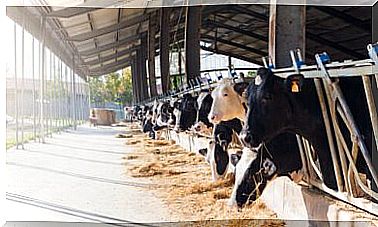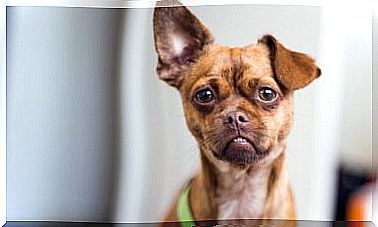How To Prevent The Spread Of Flu In Pets

It is widely known that many animals can suffer from the effects of the flu. This virus manifests itself universally in animals that can contract it with sneezing, respiratory distress, generalized weakness and fever, among others. Now, do you have in mind measures to follow to avoid the spread of the flu if your pet is unlucky enough to contract it? Here we show them to you.

What is the flu?
The flu is an infectious disease caused by influenzavirus A or Influenzavirus B , both RNA viruses of the Orthomyxoviridae family .
I viruses nfluenza B affect only humans, while the Influenza A can affect a wide range of species, reaching accidentally infect people in specific cases. Clear examples are the cases of bird flu or swine flu, both zoonotic diseases (which can be transmitted from animals to humans).
However, if you have a pet in your environment and it falls ill with the flu, you do not have to be alarmed. The spread of influenza between pets such as dogs or cats and guardians is practically impossible, since the microorganisms that cause it in both species are different, although the symptoms are so similar.
Although the mortality rate from influenza in companion mammals is negligible, it must be taken into account that these viral strains are highly contagious between animals of the same species. This ease of contagion is aggravated in nuclei of animal protection, such as protectors or zoos, in which extreme precautions must be taken with the sick.

The first barrier is prevention
Here are a series of tips to avoid spreading the flu in your pet and that it has the best possible time:
- The first barrier is prevention. Influenza viruses have been found in studies to be more stable and stay in the air longer in cold, dry climates. Therefore, avoiding exposing your pet to open windows or drafts is essential for its well-being.
- If you suspect that your animal has contracted the flu, you should go to a veterinarian as soon as possible. In addition to the symptoms previously described, one that does not usually deceive is body temperature. For example, the temperature of dogs is between 38 and 39 degrees. A higher value will indicate that something is wrong.
- If the disease of the animal is confirmed, the best thing to do is to isolate it from others as much as possible. In community animals such as rabbits or rodents, it is always advisable to have an empty separate cage for these types of cases. The sick animal will be removed as soon as possible from the colony and treated in a separate space from the rest.
- In social animals such as dogs, it is essential to limit contact with others of their kind. If two live together in the same family nucleus, it will be essential to clean surfaces that come into contact with the sick animal on a daily basis, even if they are not shared. This includes disinfecting drinkers, feeders, toys, and blankets among others.
- Limiting contact is also essential during walks. Avoid doing them in the coldest hours, and also make contact with other people’s pets impossible. The interactions and games will return when the animal has recovered.

And you, how can you protect yourself?
Although the type of flu is an exclusive disease of the companion species, an increase in temperature or other flu symptoms can indicate various pathologies that do not correspond to this disease. As you take your pet to the vet and receive a diagnosis, it is necessary to protect your own health. The CDC (Center for Disease Control and Prevention) provides certain guidelines:
- Frequent hand washing is essential, especially after handling animals, and avoiding direct contact with their feces.
- Pick up the pet’s feces immediately and dispose of them appropriately, using gloves and taking extreme hygiene measures.
- Avoid under any circumstances handling food after interacting with the animal or when it has access to them.
With all these prevention measures, a pet sick with the flu will be prevented from transmitting it to others of its kind, whether they belong to your family nucleus or not. Finally, it is necessary to be careful as guardians of your own health, because until a veterinary diagnosis is received, a possible zoonotic disease cannot be ruled out .









